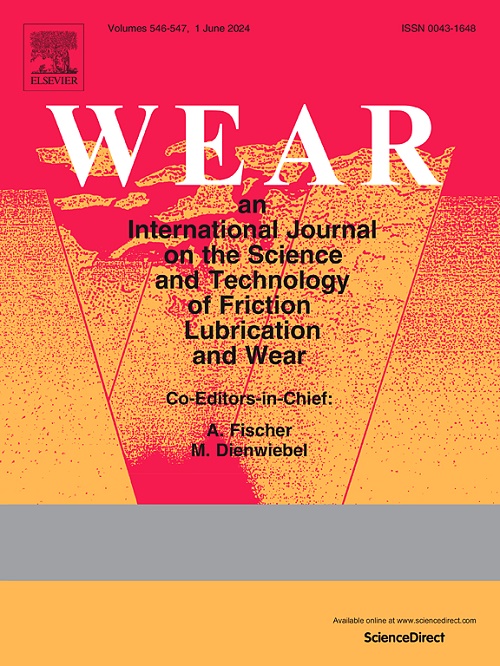基于物理数据的GH4169合金铣削表面微动磨损率预测模型
IF 5.3
1区 工程技术
Q1 ENGINEERING, MECHANICAL
引用次数: 0
摘要
这项研究提供了对高温合金GH4169在铣削加工表面上的微动磨损性能的深入了解,这是一个关键的制造步骤,可以显著改变材料的表面完整性,从而影响其磨损行为。分析了不同微动参数铣削表面的摩擦系数、磨损量、磨损率和磨损机理。针对未经处理的表面,建立了基于有限元仿真的微动磨损模型,并结合迁移学习技术,建立了高效的物理数据双驱动磨损率预测模型。该模型首先使用模拟数据捕获合金的磨损特性,然后通过迁移学习进行微调,以适应铣削后的表面状态。研究结果表明,有限元模拟与迁移学习相结合的方法显著提高了GH4169合金磨损性能预测的准确性。与没有迁移学习的模型相比,迁移学习模型对未处理表面的预测精度提高到93.77%,对铣削加工表面的预测精度提高到93.43%。此外,还发现铣削对合金摩擦系数的影响有限。但显著改善了微动磨损机理和耐磨性。这为理解铣削对材料磨损行为的影响提供了一个新的视角。本文章由计算机程序翻译,如有差异,请以英文原文为准。
Physical-data-driven fretting wear rate prediction model for GH4169 alloy milling surfaces
This study provides an insight into the fretting wear properties of the high-temperature alloy GH4169 on milled machined surfaces, a critical manufacturing step that significantly alters the surface integrity of the material and consequently affects its wear behavior. The coefficient of friction, wear volume, wear rate, and wear mechanism were analyzed for milled surfaces with different fretting parameters. A finite element simulation-based fretting wear model is constructed for untreated surfaces, and transfer learning technology is integrated to develop an efficient physical-data dual-driven wear rate prediction model. The model initially captures the wear characteristics of the alloy using simulation data and is then fine-tuned through transfer learning to adapt to the surface state after milling. The study results demonstrate that the combination of finite element simulation and transfer learning method significantly enhances the accuracy of predicting the wear properties of GH4169 alloy. Compared to the model without transfer learning, the prediction accuracy of the model with transfer learning increased to 93.77 % on untreated surfaces and up to 93.43 % on milled machined surfaces. In addition, it was discovered that milling had a limited impact on the friction coefficient of the alloy. However, it significantly modified the fretting wear mechanism and wear resistance. This offers a new perspective for understanding the influence of milling on the wear behavior of materials.
求助全文
通过发布文献求助,成功后即可免费获取论文全文。
去求助
来源期刊

Wear
工程技术-材料科学:综合
CiteScore
8.80
自引率
8.00%
发文量
280
审稿时长
47 days
期刊介绍:
Wear journal is dedicated to the advancement of basic and applied knowledge concerning the nature of wear of materials. Broadly, topics of interest range from development of fundamental understanding of the mechanisms of wear to innovative solutions to practical engineering problems. Authors of experimental studies are expected to comment on the repeatability of the data, and whenever possible, conduct multiple measurements under similar testing conditions. Further, Wear embraces the highest standards of professional ethics, and the detection of matching content, either in written or graphical form, from other publications by the current authors or by others, may result in rejection.
 求助内容:
求助内容: 应助结果提醒方式:
应助结果提醒方式:


